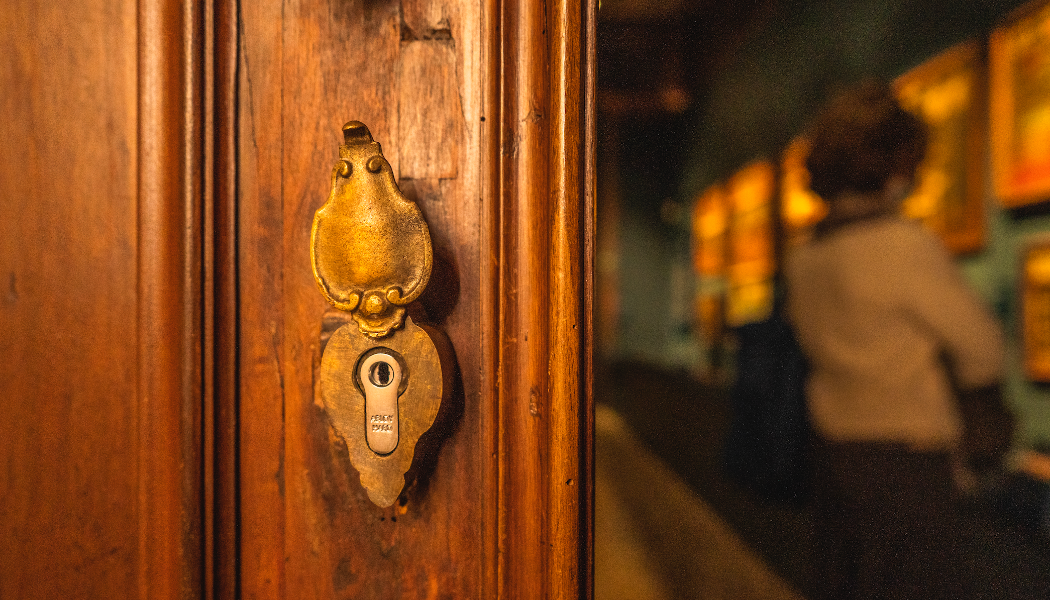Research shows that our most precious buildings and their contents are being targeted by criminals, with 22.7% of grade I and II listed buildings subjected to heritage crime. To put this into perspective, this equates to over 70,000 properties targeted with crimes such as theft, arson, and antisocial behaviour.
As a result, some of this country’s most significant cultural assets are being damaged or stolen, costing millions in repairs. But money cannot put a price on the damage felt by losing priceless historical artefacts.
The value of art and antiques stolen each year is reported to be around £300 million, with around 50,000 to 100,000 works of art stolen worldwide annually, meaning many precious items that once gave insight into the past are now lost forever.
With this in mind, what are the challenges of securing heritage environments and how new digital access solutions can help keep buildings and artefacts safe?
The basic principles
There are some basic principles when it comes to protecting listed and heritage buildings and property, the first of which is minimal intervention. This is important because any changes to a listed property must cause as little impact to the building and its fabric as possible, so not to spoil the historical architecture it may have.
In addition, only the minimum amount of work necessary to achieve a stated objective should be undertaken, and all the work should be justified. The work must also be reversible, and any changes to historic fabric or a listed building should be reversible too, wherever possible.
Security systems should be installed with due consideration to the overall appearance of the building. For example, there may be a requirement for cylinders to be easily hidden behind existing escutcheons or door furniture to maintain the existing aesthetic.
Alternatively, if locks and cylinders are on show, an appropriate finish will be needed to match the design of the door. If an area cannot be secured with a cylinder, padlocks could be used to maintain security in hard-to-reach areas.
Finally, compliance is paramount, and the installation of security equipment, like all changes to listed buildings, must comply with all legal requirements, including listed building consent.
The Abloy solution
There are a range of access control solutions available to help keep heritage buildings and contents safe, and additional benefits aside from physical security can be gained.
For example, Abloy UK offers a range of high security solutions for valuable heritage buildings, including a wide range of mechanical locks, known worldwide for their high security benefits in securing heritage assets and properties.
In addition to traditional mechanical solutions, one system that is also proving popular in securing heritage environments is PROTEC2 CLIQ® – a user friendly access management system that enables remote key management and provides comprehensive audit trails on locks and padlocks.
The real-time audit trails offer peace of mind, and keys can be revoked electronically any time, even remotely from off-site. The system also offers flexibility and multiple access points are available, meaning a building’s constantly changing access needs can be managed with ease.
The PROTEC2 CLIQ® system is suitable for many different types of locking point, securing artefacts no matter where in the building they are exhibited or stored. The solution is simple, efficient, and easy to install and maintain, with no wiring needed on cylinders or padlocks.
Changing a key’s battery is easy, and the only regular maintenance the system requires, with the average battery lasting up to 10 years operation. This increases staff efficiency and reduces cost, as there’s no need to invest in extra monitoring devices.
Case in point
MUVE is a network of 11 museums spread around the historic centre of Venice and the Venetian Lagoon. It encapsulates one of Italy’s biggest cultural attractions and draws over two million visitors every year — to more than 700,000 works of art, five specialist libraries, a photographic archive and a warehouse.
MUVE chose the CLIQ access management solution from ASSA ABLOY. With CLIQ, doors and other openings are locked with a broad range of wireless cylinder types. Site users unlock with their own battery powered CLIQ key, which is pre-programmed to open authorised doors. The design of a CLIQ cylinder enables concealed installation: MUVE benefits from modern access functionality without changing the appearance of their historic properties.
MUVE’s security teams now operate more efficiently; they no longer manage huge numbers of keys; and they issue individuals with access rights limited to their work tasks and authorized on-site timetable. Audit trails allow administrators to track who went where, and when, if an investigation is needed.
Building users appreciate the convenience of carrying one key which can be updated anytime. “This project in some of the world most precious buildings is yet another example of how ASSA ABLOY solutions can be tailored to meet even the most challenging environment,” says MUVE’s Lorenzon Palmisano.
“It is a very functional solution that combines together the highest elements of safety with, of course, our cultural heritage,” he adds.
For further information on products and services available from Abloy, visit https://bit.ly/3w4i0Pj, call 01902 364 500, or email [email protected].










